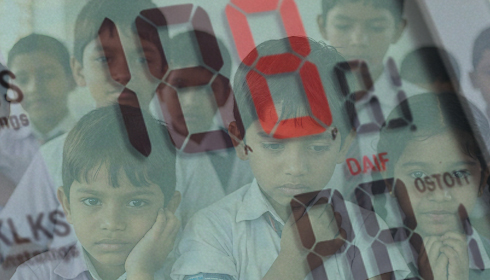
Study Reveals 7.37% of Schoolgoing Delhi Teens Suffer from Hypertension
A recent health study from Delhi uncovered a worrisome trend; Hypertension (high blood pressure), which is more common in adults, affects 7.37% of school-age teenagers. This report highlights a severe public health hazard arising among teenagers, particularly those attending private schools, who were shown to be at a higher risk than students attending government institutions.
According to media sources, doctors engaged in the study stated that increased obesity, high cholesterol, and high blood sugar levels are contributing to the increase in adolescent hypertension. Youth aged 9 to 17 years are increasingly exhibiting symptoms of these diseases, previously thought to primarily affect older persons.
The survey looked at 3,888 students from both government and private schools. Of these, 1,903 came from private schools and 1,985 from government schools. Maulana Azad Medical College and Lady Hardinge Medical College researchers screened patients for weight, waist size, blood pressure, and blood sugar levels.
Private school pupils appear to be at a higher health risk than their classmates in public schools, with a substantial disparity in key health markers. According to recent studies, 24.02% of private school kids were overweight and 22.70% were obese, which is significantly higher than the 7.63% and 4.48% found in government schools, respectively. Furthermore, 9.93% of private school teens had pre-hypertension, and 7.44% had hypertension, which was slightly higher than the number for government school kids. Health experts attribute this trend to lifestyle differences: private school pupils eat more processed foods, engage in less physical activity, and spend more time on screens. These habits, when combined, raise the risk of metabolic disorders like obesity and high blood pressure at a young age.
The findings raise major concerns about schoolchildren's metabolic health, particularly at private institutions. It discovered that 15.02% of all kids had blood sugar levels above 100 mg/dL, putting them at a higher risk for getting diabetes in the future. When the data is split down by school type, the difference becomes clearer: 20.74% of private school pupils had increased sugar levels, nearly double the 10.93% in government schools. A similar pattern emerged regarding cholesterol. High cholesterol was discovered in 5.90% of private school pupils, compared to 3.36% in government schools, while borderline cholesterol levels impacted 21.07% of private school students, more than doubling the 10.85% recorded in government schools. These statistics show a clear pattern: private school pupils are more exposed to lifestyle-related health risks, most likely due to increased processed food intake and lower levels of physical exercise.
Waist circumference, which shows fat development in the abdomen, was also assessed. The survey discovered that 16.77% of private school children had abdominal obesity, which was nearly double the 9.15% seen in government schools. Waist circumference is an important measure since extra abdominal fat is directly connected to insulin resistance and cardiovascular disease.
Doctors involved in the study warned that if not treated swiftly, these early indicators of hypertension, excessive sugar, and cholesterol could develop into chronic health problems in adulthood. A physician pointed out, "If this trend continues, we will see more young adults with heart disease, diabetes, and kidney problems before they even turn 30."
The report also implicitly emphasises social inequities in healthcare. While private schools are often linked with better facilities, their kids appear to be more susceptible to lifestyle-related disorders, probably due to excessive junk food consumption and a lack of outdoor activity.
To address the increased health risks among youngsters, experts emphasise the importance of a multifaceted strategy that begins in school and extends to the home. Nutrition education and health awareness seminars can help children make informed food and lifestyle decisions. Making sports and yoga essential will encourage regular physical activity, while prohibiting junk food and sugary drinks from school canteens will help avoid bad eating patterns. Regular health screenings can help detect early indicators of obesity, hypertension, and high blood sugar. However, schools alone cannot accomplish all these goals. Parents must support these efforts at home by providing nutritious home-cooked meals, limiting screen time, and ensuring their children receive adequate sleep, establishing the groundwork for a healthier future.
This report should serve as a crucial reminder to schools, healthcare providers, and legislators. With rising rates of adolescent hypertension and related diseases, it is time to change our schools' focus away from academic achievement and towards general health and well-being.